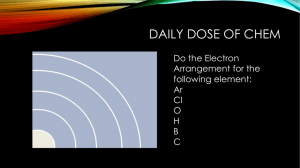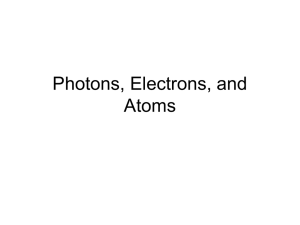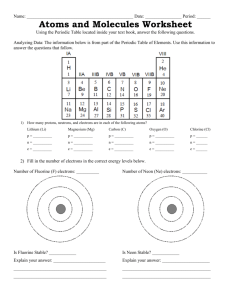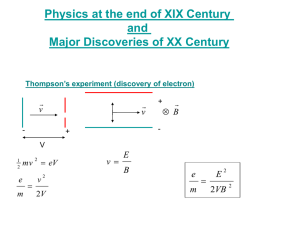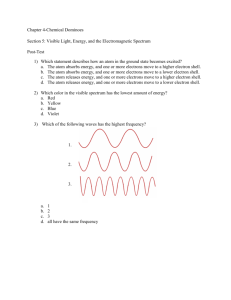Investigation 1.4.1
advertisement
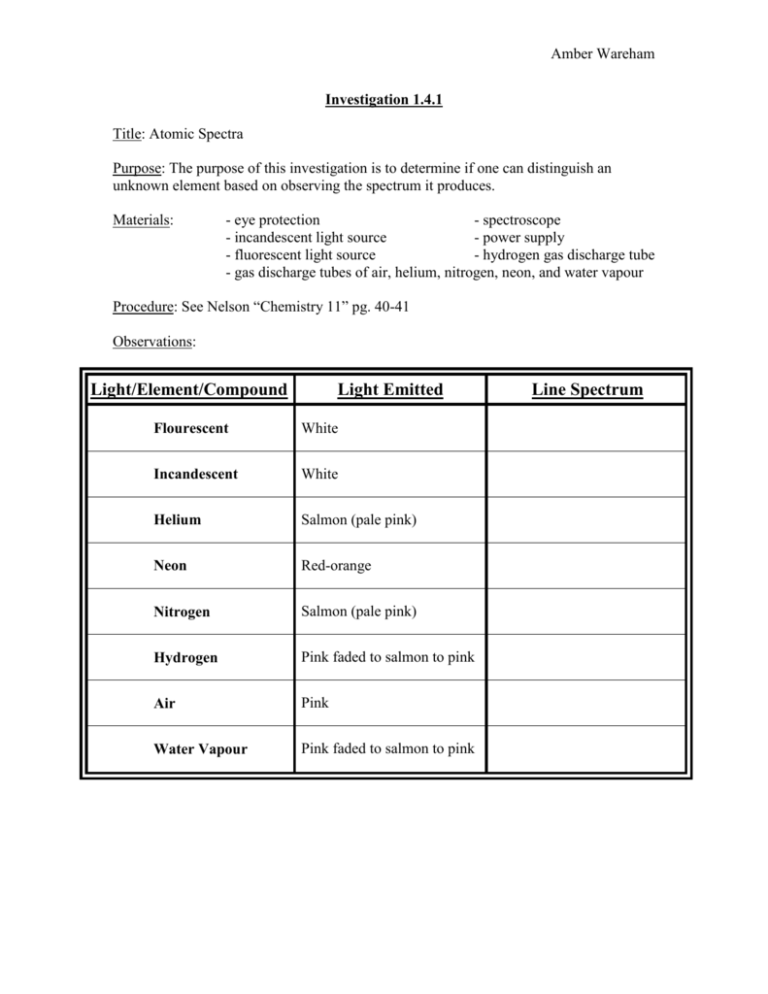
Amber Wareham Investigation 1.4.1 Title: Atomic Spectra Purpose: The purpose of this investigation is to determine if one can distinguish an unknown element based on observing the spectrum it produces. Materials: - eye protection - spectroscope - incandescent light source - power supply - fluorescent light source - hydrogen gas discharge tube - gas discharge tubes of air, helium, nitrogen, neon, and water vapour Procedure: See Nelson “Chemistry 11” pg. 40-41 Observations: Light/Element/Compound Light Emitted Flourescent White Incandescent White Helium Salmon (pale pink) Neon Red-orange Nitrogen Salmon (pale pink) Hydrogen Pink faded to salmon to pink Air Pink Water Vapour Pink faded to salmon to pink Line Spectrum Amber Wareham Analysis of Results: i) page 41, questions (a,b,c): a)) In this variation of the investigation, it was known what was in each gas discharge tube prior to observing its line spectrum. However, of the elements whose line spectra are documented in the appendix and if which we observed, the line spectra recorded during the investigation are accurate when compared with the appendix. b)) While the incandescent light source exhibited a line spectrum of red through violet, the spectrum of the fluorescent light source only showed lines of red, green, indigo, and violet as distinguished colours. This suggests that the light produced by the respective types of light involves different chemical reactions with different elements and compounds. c)) In this investigation, the elements that produced the largest number of spectral lines were nitrogen and neon. In regards to electron transitions, this suggests that the electrons of these elements are dropping to lower energy levels in more combinations than other elements. This could be caused by possibly because these elements are more reactive to heat or because there is a stronger attraction between the electrons and the protons in the nucleus. ii) a)) Water vapour is made up of H2O, or hydrogen and oxygen, in its gaseous state. b)) Air consists essentially of oxygen, carbon, and nitrogen. iii) page 42, questions (1-4) 1. When a gas is heated, it emits light because the extra energy causes the electrons to become excited and able to make a transition to a higher energy level. The light that is emitted is then produced when the electrons release energy to make the transition to lower energy levels. The energy released corresponds to wavelengths, accounting for different colours. 2. The different colours in a line spectrum represent the wavelengths corresponding to the released energy of electrons. 3. Different substances show different spectra because they have different combinations of electrons. This causes the electrons to react differently from substance to substance, depending on an element’s reaction to heat or electricity, release energy in different combinations. 4. Based on the observation that sodium vapour lamps emit a yellow light, it can be concluded that the electrons in sodium atoms are prone to dropping to energy levels in a somewhat uniform and single combination, where the electrons drop from a specific energy level to another specific energy level emitting a yellow wavelength. Conclusion: In conclusion, it is possible to distinguish an unknown gas in a gas discharge tube by comparing the observed line spectrum with those of known elements.
